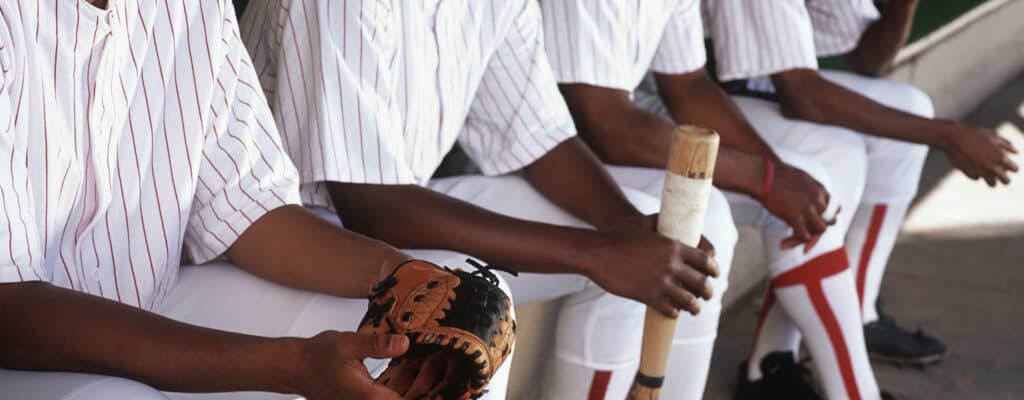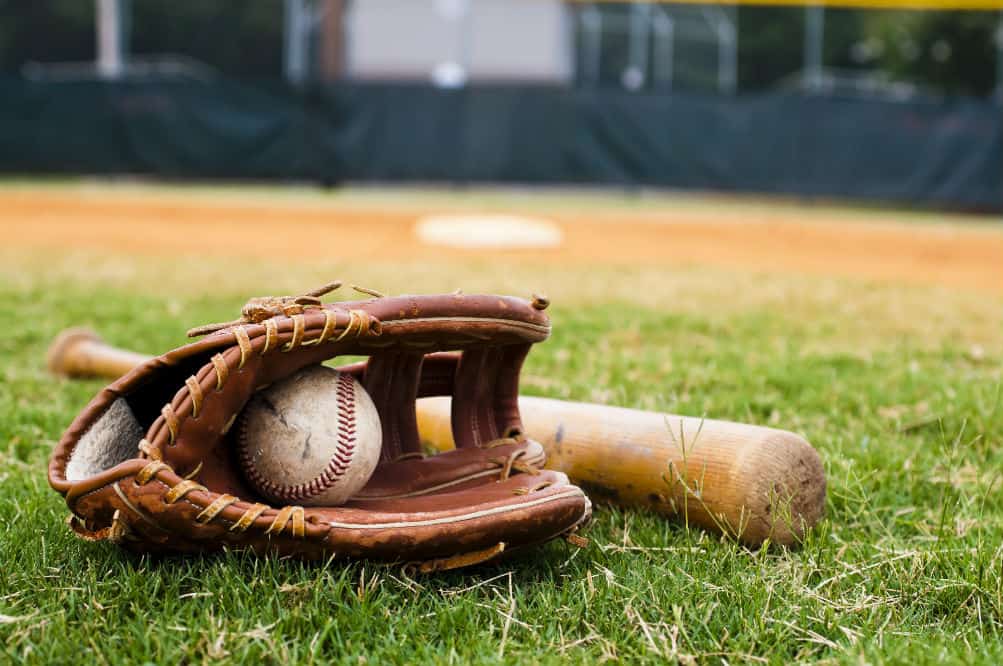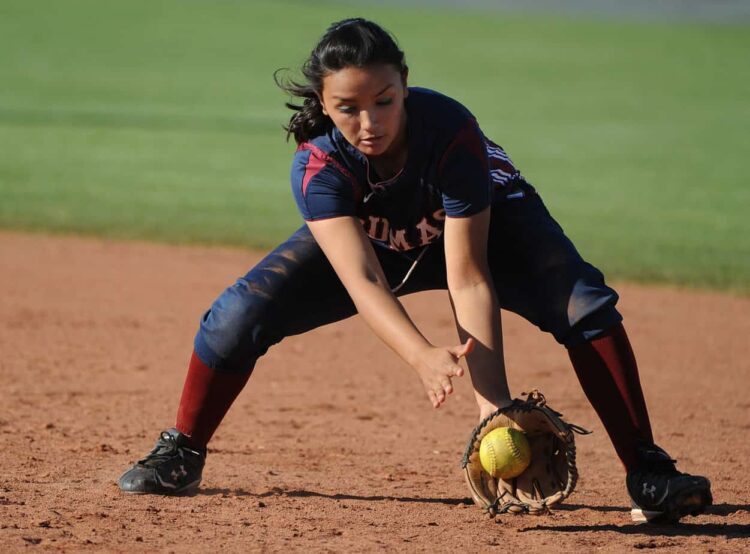You may have the best baseball glove for your age and skill level, but how you care for it dictates its performance and durability henceforth. See, it is about how you break in, condition, oil, and clean your baseball glove. So, this quick guide lists the steps for cleaning the inside of your baseball glove the right way. Moreover, sometimes your cleaning routine may focus too much on the gloves’ exterior, hence neglecting the inner sections. Yet, when molds and wear and tear kick in, they start and spread faster from the inside.
Let’s get to the guide!
Your Focus
The interior of a baseball glove has a pocket, heel and heel pad, hinge, web, and web crotch. These sections handle ball throws and transfers at significant speeds. In turn, they accumulate dirt and mud, resulting in nasty stains, stickiness, or becoming heavy. Aim to restore the condition of each of the interior sections by cleaning it the right way.
The Steps
You Will Need
- A dry, starchy brush
- A microfiber cloth or cotton rag
- A safe cleaning agent or mild soap (depending on your baseball glove material)
- A glove conditioner
- A deep penetrating glove oil
The Procedure
Step 1: Loosen the Laces
Laces harbor lots of visible dirt and invisible grit. Therefore, take your time to remove them before you start to clean the inside of your baseball glove.
Step 2: Scour the Glove
Note that dirt leaves nasty stains on the inside of your baseball glove. It permeates the protective finish, weakening the structure of your glove. So, make it a habit to inspect your glove for dirt at the end of all your practice or game sessions.
Next, inspect the inside and outside of the baseball glove for surface-level dirt, grime, or grit. Once you spot some, use your starchy brush to remove the dirt. Let the glove rest a bit before checking and brushing off any remaining dirt two or three more times as needed. Also, shake the glove to remove any hidden sand in between the finger stalls.

Step 2: Apply the Cleaning Agent
Did you know baseball glove cleaning agents have strapping ingredients that remove oils and conditioning cream alongside the dirt and sweat on your glove? Hence, only apply a small amount as necessary when cleaning your glove.
Spatter some cleaning agent in circular motions on your glove. Wait for the cleaning agent to get rid of the dirt. It could be minutes or hours of waiting, as per the soap manufacturer’s instructions.
Step 4: Apply the Glove Conditioner
The glove conditioner dampens the glove to rehydrate. More so, it facilitates breaking in of your mitt. Still, use the conditioner sparingly. You don’t want to have a wet glove that weakens, hardens, or becomes too heavy later on.
Rub the glove conditioner on the finger stalls, pocket, webbing, heel, hinges, and hidden areas. Likewise, pay attention to the manufacturer’s specific instructions on how to use your choice conditioner.
Step 5: Shaping the Glove
Your baseball glove has a unique shape, thickness, length, pocket depth, and overall design to protect your hand and facilitate your moves at the pitch. Hence, it is necessary to reshape the glove after conditioning it. Here, start by relacing the finger stalls. Next, place a ball in the pocket section before tying the laces around the glove. Your glove is now ready for drying.
Step 5: Keep the Glove Dry
Unlike the back of a baseball glove, inner sections are susceptible to mold growth when damp. Hence, ensure your glove is completely dry after conditioning it. Use a clean absorbent microfiber cloth to suck out any excess cleaning products or conditioning creams on the glove. Next, place your glove under a shade outside to dry. The air ventilation ensures the glove dries evenly.
When you are in a hurry to dry your glove, avoid placing it under direct sunlight, oven, or in dryer. These methods use intense heat that can damage the structural integrity or even melt your glove. If you must, take the necessary precautions, like applying heat-protectant oil and moving the dryer in circular motions when using it.
Step 6: Oil the Glove
Finally, oiling your baseball glove keeps it dry and less susceptible to rot after a cleaning routine. Here, confirm that the inner sections are dry before applying the oil.
Other Methods – Rubbing Alcohol Solution
In the above elaborate cleaning routine, replace the mild soap with a rubbing alcohol solution. Use a terry cloth to clean the glove. Then, condition, shape, dry, and oil the glove as described above.

People Also Ask:
-
How Do You Get Mold Out of a Baseball Glove?
Mold, hard-to-remove dirt, and stubborn stains come off fast when using sudsy water in your cleaning routine. See, the foamy water has critical enzymes that break down mold growth and tough mud, grass, blood, or grease stains. Then, follow the cleaning routine as described above.
-
Can You Wash a Baseball Glove in The Washing Machine?
No. Baseball gloves comprise leather and other fabric that loses their structure when waterlogged. By placing the glove in the washing machine, you are soaking it in water. It may lose its shape, take too long to dry, and develop cracks when dry. Indeed, the damage from cleaning your baseball glove in a washing machine can be irreparable.
Extra Baseball Glove Cleaning Tips
-
Choose cleaning products with mild ingredients.
-
Follow the instructions from the manufacturer on how to use the cleaning products effectively.
-
Measure the right amount of rubbing alcohol. Use the shortest time when rubbing the alcohol solution onto the glove.
-
You can replace the glove oil or conditioner with petroleum jelly
-
Keep your gloves dry in a well-ventilated area at all times. Wrap them over a baseball glove to retain the shape of the pocket.
-
Ensure your hands are clean and dry before you wear your baseball gloves to a game.
-
Check for signs of wear and tear and repair your glove accordingly.
Conclusion
Maintaining your baseball gloves in tip-top shape starts with sticking to a reliable cleaning routine. So choose safe products to clean your glove. And give your glove time to dry well before you reshape, oil, and break it in. Indeed, having a functional game-ready glove is as easy as 1-2-3.














Baseball was never a favorite sport of mine, even though I consider myself a bit of a sports enthusiast. My son, however, has recently picked up baseball as a sport and is really enjoying it. His Aunt planned to get him his own glove for his upcoming birthday, so this article is really quite timely. I certainly never knew so much care and attention needed to be placed on its cleaning and maintenance. Moreso the fact that this routine also impacted the performance of the glove.
This article is definitely being sent to my son so he can prepare from now, as I’m not going to make this a chore of mine … lol. I would appreciate it, though if you could recommend a type or brand of conditioner and oil that we should use? Maybe you can give me two options since I’m not sure how costly these items may be.
Hi, Roberta, and thank you.
Thank you for your kind words.
There are many good conditioners and oil on the market. I can name a few like for example, Obenauf’s Leather Oil, Wilson Premium Glove Oil. And then I recommend good conditioners like Wilson Pro Stock Glove Conditioner and Hot Glove Cream Conditioner, to name a few.
Here is an article about good baseball gloves which I believe you would be interested in.
Great to hear about your benefit of the article too.
Don’t hesitate to contact me to help you with anything else or if you have any questions.